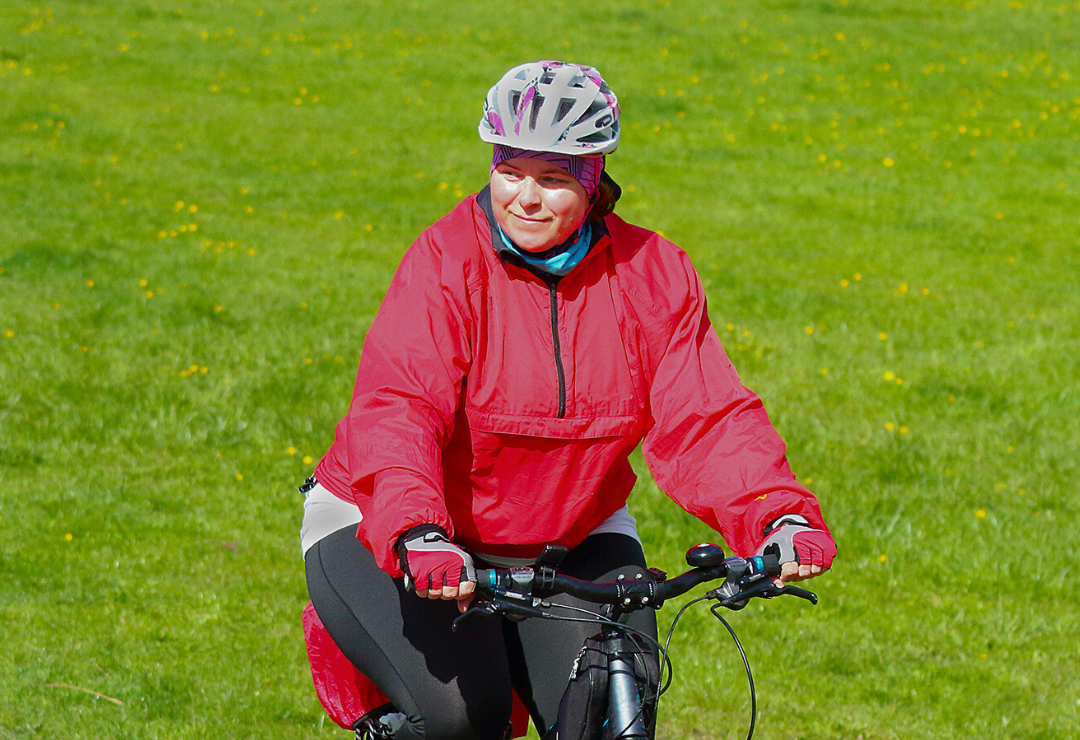Weight Bias on Wheels
Exploring the perceptions and realities surrounding fat erasure in cycling and active transport has never been more urgent — now is the time to uncover potential pathways to challenge societal norms and redefine inclusivity in transport.
An interview with Francis Ray White and Rachel Aldred, elaborated by Alessia Giorgiutti.
POLIS: What role do media and societal beauty standards play in the erasure of fat people in cycling and other active transport, and how can these norms be challenged and redefined?
Francis Ray White: For me, media representations are a result of a series of constructs of fat people — and, just to clarify, in Fat studies, we use the word ‘fat’ in a neutral way, as the term ‘obesity’ has become more of a medicalised term.
Beauty standards surely contribute to the constructs, but we have to remind ourselves that we are living in a time where fatness is tied up with concepts like disease, laziness, immorality, and irresponsibility: this false correlation makes the idea of a fat person leading an active lifestyle kind of culturally unintelligible.

Francis Ray White, Reader in Sociology, University of Westminster
There is a widespread (mis)understanding that fat people do not participate in physical activities because it is implied that they must have gotten fat in the first place by not doing any exercise. This feeds yet another construct – one that sees exercise inevitably intertwined with weight loss, making it unthinkable to engage in any kind of activity that is not about weight loss.
Rachel Aldred: What you are saying about individual health and its correlation with active modes is very interesting, because some research and articles suggest that individual health is actually not that big of a motivator for people to, for example, cycle to work — public health, on the other hand, is increasingly a motivation or justification for policy. However, public health research looking at active travel can be problematic in terms of fatphobia; for instance, when it uses the Body Mass Index (BMI) as an endpoint, making assumptions that there are desirable body mass index ranges.
Francis: Indeed, I also think that the public health discourse on obesity sees weight loss as the only metric of success; it is really not about actual improvements in your health — it is all about the BMI!
It is somewhat ironic, considering that statistics show that 95% of people who lose weight put it right back on plus more within five years (n.b. this percentage has been debated in the years – other sources lower it between 65% and 80% depending on the study). Basically, weight loss does not only not work, but also does not cure any of the things that obesity is said to cause – a losing game on every front. Yet, doctors in some areas of the UK are now able to prescribe a bike loan as a treatment for fat people – some sort of medicalisation of exercise.

Rachel Aldred, Professor of Transport and Director of the Active Travel Academy, University of Westminster
Rachel: This brings me to another point, which is that sensational language and fictitious portrayals play a role in fat people’s erasure in active transport, as well as the narrow definition of what is considered ‘healthy’ — just think of the phrase ‘obesity epidemic’ so often and freely used in public health and media, or the ’headless fatty’ — a term, made popular in 2007 by activist Charlotte Cooper, that refers to photographs or videos of anonymous obese people used in news media stories about obesity.
There is this book — ‘The Miracle Pill’ by Peter Walker — which says some interesting things about active travel: that ‘activity’, which for centuries was universal, has become ‘exercise’, a fetishised pursuit of a minority of elite athletes or a chore slotted into busy schedules, and that if it was turned into a drug – the ‘miracle pill’, an easy fix – everyone would be taking it. The narrative of active travel as a ‘miracle pill’ is quite problematic. It medicalises active travel into an individual solution, separating it from the built environment and the creation of more inclusive cities that support well-being considered widely.
POLIS: So, modern societies foster the pervasive and fatphobic assumption that thinness equals health and fitness, while fatness equals poor health and laziness. Where does active transport stand? And what can active transport do to change this notion?
Rachel: Looking at images of people cycling, via Google Image search or checking local authority websites, you would think cycling is only for 35-year-old skinny men wearing head-to-toe Lycra, but there are exceptions. Transport for London has been good at diversifying images of cycling — women wearing hijabs, older and younger people, different ethnicities — yet, the individuals portrayed still tend to be quite slim. So, I would say, for sure showing a range of body types cycling, walking, wheeling, and skateboarding would help.
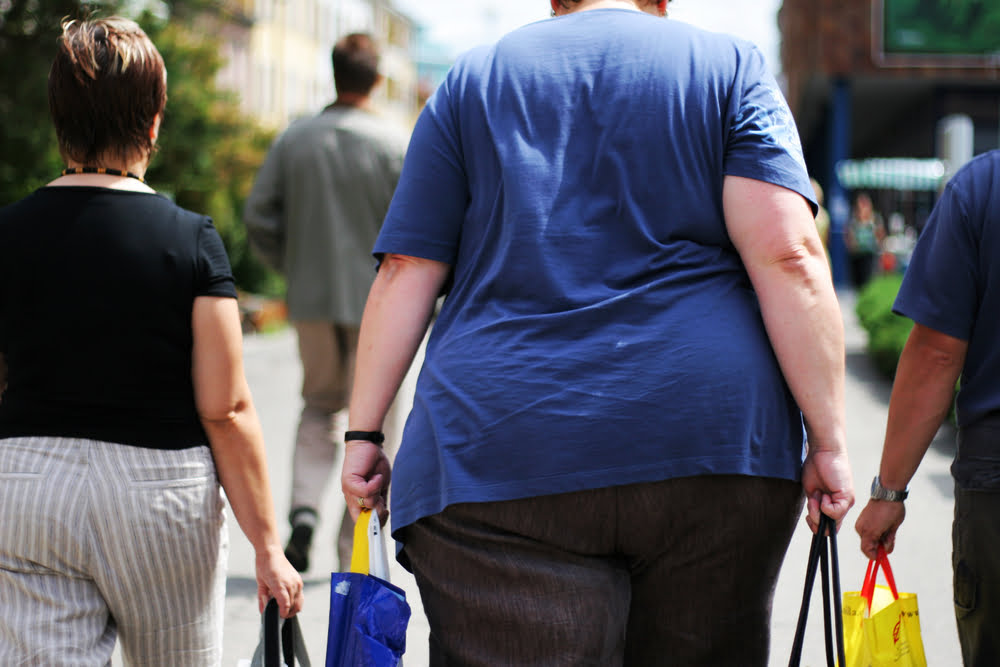
Above and below: A brief research on Shutterstock shows that visual representation of fat people is mostly stereotyped or depersonalized. Credit: Jakub Cejpek, Shutterstock
Then, there should be more research on the experience of cycling for fat people. In the 2023 study 'You always think about what other people be thinking”: Black men and barriers to cycling in London', Transport Planner Akwesi Osei and I investigated the cycling experience of Black men in London, which frequently involves harassment, abuse, and being stopped and searched by the police. The study highlighted how a marginalised group has to overcome additional barriers to cycling that are associated with direct discrimination (racism, stop and search, and lack of visual representation), as well as more indirect barriers connected to London's wider structural inequalities in areas such as employment, poverty, and housing (differential access to infrastructure, secure parking, and the Cycle to Work scheme).
While people who cycle are often subject to harassment and abuse just because they are on a bike, it is important to look more thoroughly at the experience of marginalised groups — fat people included. One of the Black men researched in Akwesi’s paper pointed out that he was not being abused primarily for being a cyclist, or even specifically a Black cyclist, but for being a Black man in public space. Also, representation in planning would go a long way!
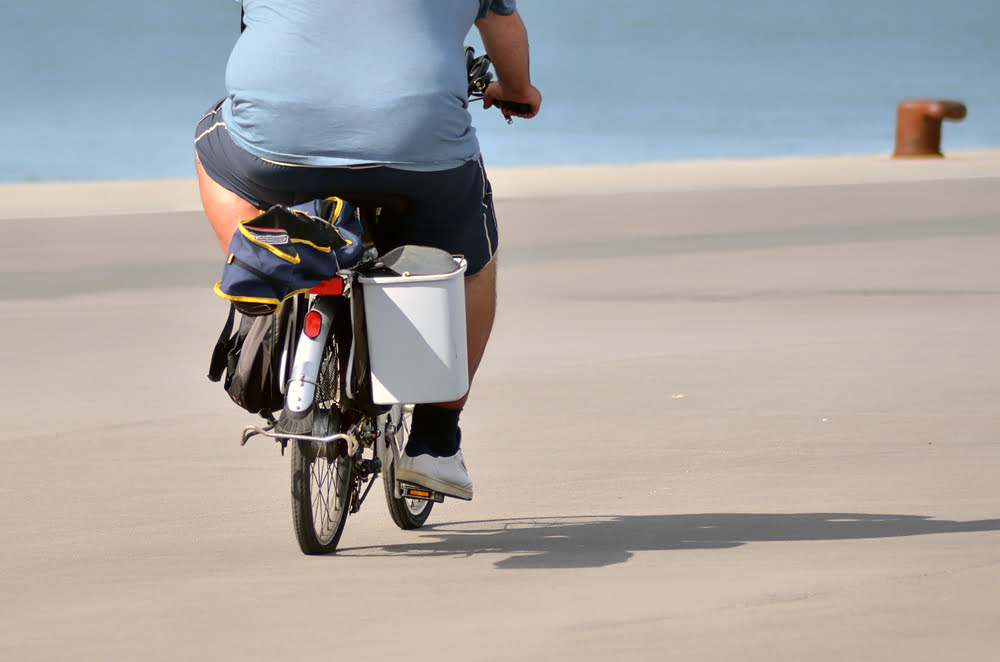
Credit: lafoto, Shutterstock
Francis: There has been a lot of fat activism trying to assert that fat people can be healthy and do exercise, but it receives so much pushback. When fat people step out of their assigned role of being sad and unattractive, wanting to lose weight yet not doing anything with their lives, it angers people. We are trained to think that being fat is a temporary aberration that we should be working to rid ourselves of so that life can then commence: ‘I lose weight, so that I may then go to the gym’, ‘I lose weight, and then I will be able to go out dancing’, and so on. I think cycling in particular does have a reputation. While it is an everyday thing, people also see elite cycling, and that does make you think that you can only be incredibly fit to cycle.
POLIS: Do you think there is a big gap between perceived and actual access to cycling?
Francis: Just out of curiosity, I was checking the weight limit of a Boris Bike – a nickname for Santander Cycles, a public bicycle hire scheme in London – and it is 115 kilos. Sure 115 kilos is fat, but not super/"not-able-to-be-active” fat. So, this begs the question: do fat people have access to the right kind of equipment? And does this equipment cater to the whole spectrum of fatness?
There is a big variation between people who think they might be inhibited by their size but actually are not that physically big, and those who are called super fat, who would need specific, adaptable, and accessible equipment. Yes, they are all fat, but also deserve of being seen, heard, and catered for based on their diversity.
Rachel: I am really glad you mentioned weight limits on bikes: I was looking at step-through frame bikes — those with a low or absent top tube or cross-bar, which are easier to get on and off — and their weight limit is quite low. It shows that sometimes some of the more accessible types of bikes have lower weight limits than some of the ones that are maybe less accessible. And also, if people want to wear a cycling kit, this can be quite expensive and may not be available in larger sizes!
POLIS: Because of a persistent weight bias, a lack of diversity in research, wrong assumptions about health and fitness, or different funding priorities, it is difficult to find studies and cities that promote inclusivity and combat fatphobia in active transport — would you agree with this statement? And are there any studies or cities that challenge this erasure and discrimination?
Francis: Surely, there is not much out there, and I fear the little research there is might well fall back into the narrative of using active transport as a way of losing weight. There is qualitative research on other aspects of being active, such as going to the gym, but when it comes to quantitative work, again, I would not say there is much.
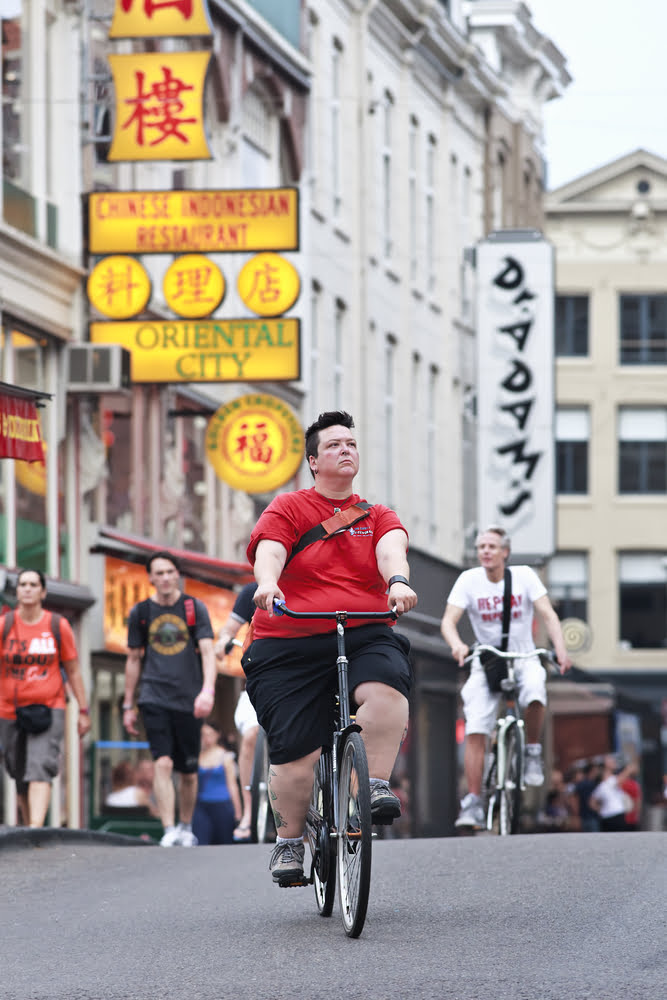
Credit: TonyV3112, Shutterstock
This surprises me because there is a lot of discourse about fatness in relation to climate change based on the idea that ‘what is good for the planet is good for weight loss'. There are also similar arguments about the concept of Fit Towns and sometimes around the inaccessibility of using public transport as a fat person, but there seems to be very little on active transport.
Rachel: Exactly, there is research linking fat people and active travel but it tends to focus on active travel as a way to reduce weight or BMI. I am not aware of anything on differential participation in active travel by fat people — although it might be possible to use secondary data to look at this — nor do I know of any qualitative research focusing on marginalisation rather than seeing the participation problem as within fat people themselves. I do find it hopeful that such a shift has happened in other areas: for instance, around gender, there has been a shift away from seeing women’s lower participation as a cultural problem to seeing it as an exclusion problem, whereby women’s experiences and views need to be foregrounded to redress marginalisation in planning and policy.
As for cities actively working on this topic, I cannot say I came across any examples yet. I found groups and individuals who were advocating, but as yet nothing from a city authority. It would be great if Transport for London took this up as it has taken more of a lead on other issues, like cycling and disability.
POLIS: If you could talk to a local authority in transport and give them some advice on how to tackle fatphobia in active transport and transport in general, what would you suggest to them?
Francis: I think it is a really hard question, because it is rare to see anything related to fatness that is not also oriented towards the need of avoiding being fat at all costs. So, maybe, go and talk directly to fat people – I assume that there are plenty of groups ready to have these conversations: go talk to them about what they need and want.
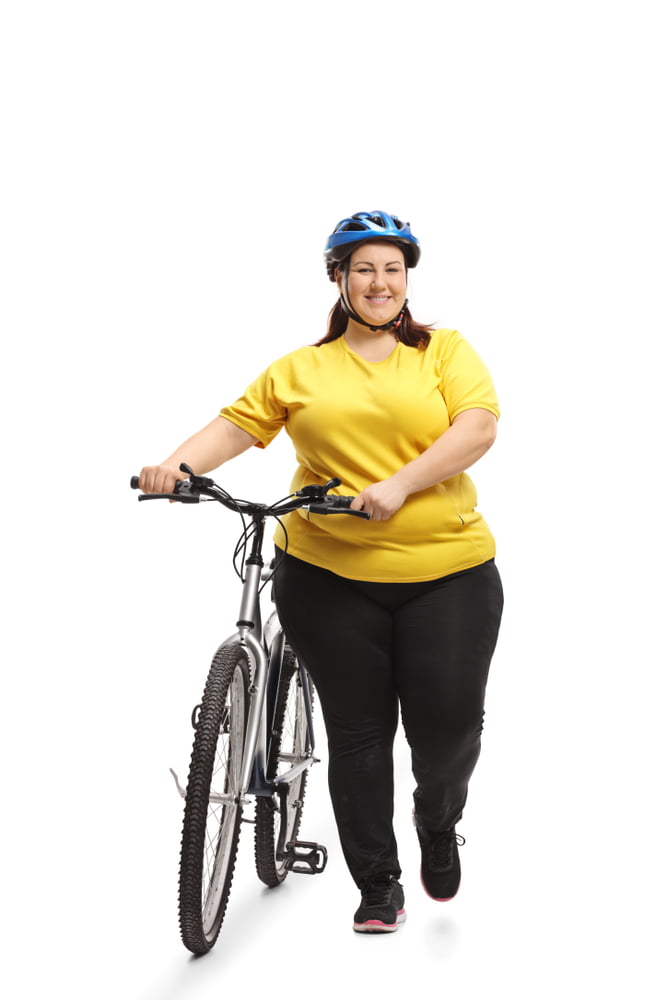
Credit: Ljupco Smokovski, Shutterstock
Rachel: Yes, local authorities should definitely talk to representatives of organisations working on fatness: they might as well already have data and initiatives up and running that may just need visibility – a platform to share their knowledge. Also, local authorities probably need to be challenged: I am sure some planners never thought about being fat and cycling! Moreover, if you are interested in the topic and want to bring it forward to a local authority, maybe aim at those that are doing better in other social justice and equity issues, as they might probably be willing to lead on this and have this conversation in the first place.
Francis: I think we do not often understand fatness as a societal form of discrimination and inequality because we tend to see it as the fault of the individual, but it actually is and it does often also overlap with socioeconomic inequality, disability, and gender issues, making the barriers multiple. One can only hope to remove them working both bottom-up and top-down.
Click here to read the article in its original format.
About the contributors:
Interviewer: Alessia Giorgiutti coordinates POLIS' corporate communications and magazine and has been involved in several EU-funded projects as a Communications Manager. She currently supports other Managers and Officers on tasks related to content production and communication for their projects. Her work focuses on making accessible and inclusive content about transport, as well as highlighting the experiences of marginalised users.
Interviewee: Francis Ray White’s research is interested in theorising fat, queer and (trans)gender bodies. They are currently working on research projects on fat/trans embodiment, trans pregnancy and the experiences of non-binary people in HE. Previous work has been published in journals and books including Fat Studies, Sexualities, and The Routledge International Handbook of Fat Studies (2021).
Interviewee: Rachel Aldred's work centres on sustainable mobilities and active transport. She has received multiple awards for her research, including the ESRC Outstanding Impact in Public Policy Prize and the Westminster University Prize for Research Excellence. Her research projects, including the Near Miss Project and the Propensity to Cycle Tool, have received recognition for their contributions to the field of cycling.
